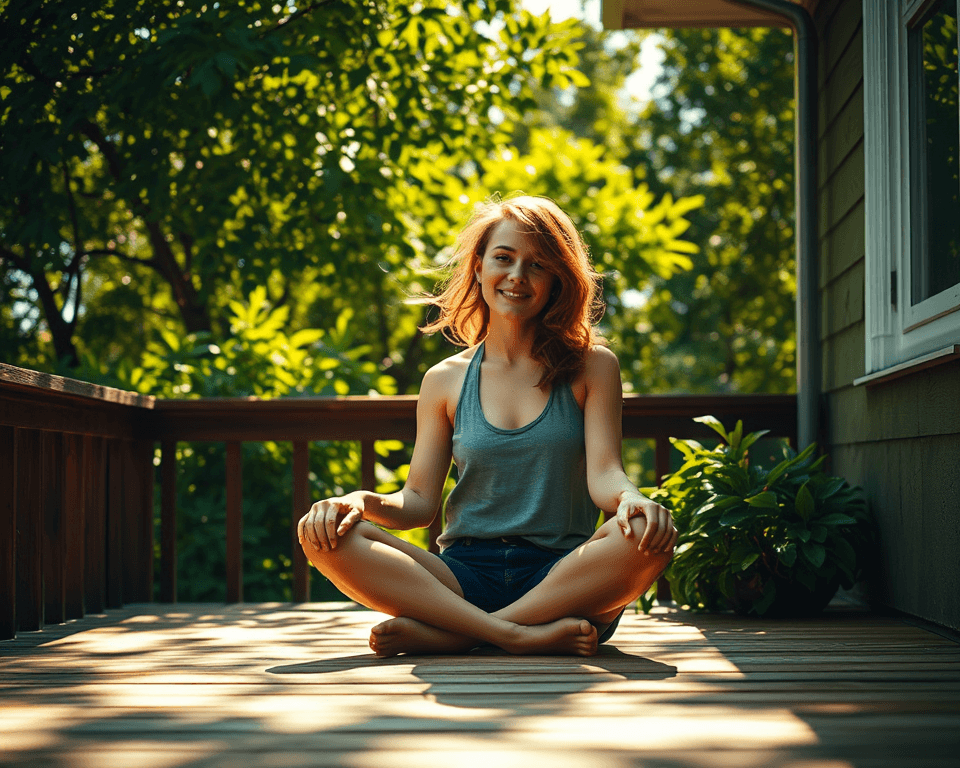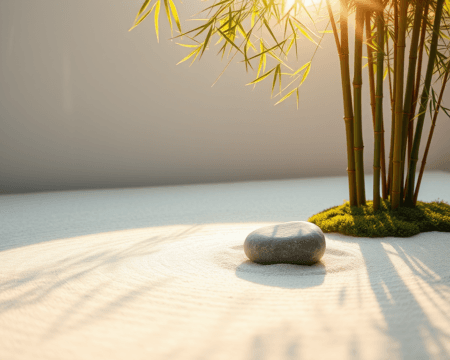You ever notice how we get so caught up in the hustle and bustle that we forget to pump the brakes and take a breather? I’m talking about the glorious, often underrated act of spending time alone. I’ve found that when I carve out moments for solitude, it’s like hitting the refresh button on my self-love journey. It’s not just about being alone; it’s about reconnecting with ourselves in an empowering way. So, if you’re itching to understand how solo time can radically enhance your self-love and personal growth, buckle up. I’m about to drop some serious knowledge on you!
Key Takeaways
- Alone time boosts self-awareness and emotional intelligence, paving the way for deeper self-acceptance.
- Mindfulness practices like meditation and journaling can enhance your self-love experience when you’re solo.
- Crafting personalized self-affirmations can empower you to elevate your self-image and smash negative thoughts.
- Engaging in creative activities alone can be therapeutic, serving as an outlet for self-expression and personal fulfillment.
- Setting boundaries with social interactions can help you recharge and prioritize your mental well-being.
Understanding the Importance of Alone Time
Let’s kick things off by addressing the core question: why is alone time crucial for self-love? I can’t stress enough how essential solitude is for personal growth. When we take the time to step back, reflect, and recharge without the noise of the outside world, we pave the way for a better understanding of ourselves. Think of it as the mental equivalent of cleaning out a cluttered closet; everything comes into focus when there’s space to breathe.
Being alone allows us to engage in self-reflection, which works wonders for building emotional intelligence. It’s during these quiet moments that we can delve into our thoughts and feelings. I’ve sat down with nothing but a cup of coffee and a journal and emerged with insights about myself that I never would’ve discovered in the chaos of daily life.
Why Alone Time is Essential for Self-Love
So, why is this practice so vital? For starters, when you’re alone, it’s easier to focus on self-care practices that genuinely resonate with you. You can explore those emotional barriers you’ve built up and start tearing them down. Whether it’s through mindfulness meditation or just enjoying some peace and quiet, this self-exploration helps reinforce emotional healing.
- Emotional Clarity: Standing apart from social norms gives you the freedom to define what you truly want and need, honing in on your personal values.
- Stress Relief: Research shows that time spent alone can lower cortisol levels, so when I take a moment to chill out, I’m not just indulging; I’m investing in my mental health.
“Solitude is where I place my chaos to rest and awaken my inner peace.”
Scientific Insights on Solitude and Well-Being
Now, let’s sprinkle in some psychological perspectives on the benefits of solitude. Studies have shown that solitude promotes mental clarity and emotional resilience. Neuroscience tells us that our brains require downtime to process experiences and integrate new information. The impacts of consistency with alone time can lead to cognitive benefits that enhance our overall mental health.
In fact, a study published in the Journal of Psychology suggested that individuals who engage in regular periods of solitude report higher levels of self-awareness and emotional regulation. Imagine that! Just carving out a chunk of your day can lead to not only a happier you, but a smarter one.
Boosting Self-Love through Mindfulness and Self-Reflection
So, how do we harness the power of solitude? Mindfulness and self-reflection are your best friends in this journey, my friend. I’m a big advocate for cultivating a strong sense of present-moment awareness—it’s a game changer when it comes to self-love.
Practical Mindfulness Exercises to Practice Alone
Practicing mindfulness alone can be as simple as focusing on your breath. I usually set aside time each morning for a few minutes of breathing exercises. Here’s how you can start: Sit comfortably in a quiet place, close your eyes, and take a deep breath in through your nose and out through your mouth. Focus solely on the sensation of your breath.
A few effective mindfulness activities you can try include:
- Meditation: Apps like Headspace or Calm (starting at around $12.99/month) guide you through about five to ten-minute sessions perfect for beginners.
- Journaling: Write down your feelings, thoughts, or even goals for the day. This helps in emphasizing self-discovery while allowing for introspection.
- Visualization: Picture your ideal self and the steps you need to get there. It’s like being your personal life coach!
Mindfulness isn’t just about silence; it’s about connecting with your inner self and enhancing your emotional balance.
How Self-Reflection Enhances Self-Worth
Along with mindfulness, self-reflection is like your emotional booster shot! I recommend allocating a specific time weekly for this. Grab a journal and jot down questions like:
- What did I learn about myself this week?
- What made me feel proud?
- Which areas of my life need more attention?
These introspective practices can illuminate the dark corners of your mind. You might stumble upon negative thought patterns holding you back or even hardcore realizations about what you genuinely want in life. By tackling these insights head-on, you build the confidence you need to break free from self-doubt.
“Self-reflection is the school of wisdom.”
Creating Positive Self-Affirmations During Solitude
Let’s get into the nitty-gritty of crafting affirmations that’ll leave you feeling like a superhero. When you’re alone, this is the perfect opportunity to take a deep dive into your self-talk. What you say to yourself in solitude makes a huge difference in how you project love and confidence into the world.
Crafting Effective Self-Affirmations
So, how do you create those affirmations? Start by identifying negative beliefs you hold about yourself. Then, flip those around. For example, if you often think, “I’m not good enough,” transform that into “I am more than enough just as I am.”
Make it personal, and make it stick. Write it out, and say it daily—trust me, repetition reinforces belief.
- Daily Affirmation Practices: You can try sticky notes on your mirror or use apps like ThinkUp (free with in-app purchases available) to record your voice saying positive phrases.
- Affirmation Journaling: Set aside a dedicated journal for your affirmations and revisit it weekly to remind yourself of your worth.
Using Affirmations to Transform Self-Image
Once you’ve got a solid affirmation game, watch your self-image shift before your very eyes. By repeating positive self-affirmations, you pave the way for overcoming negative thoughts that often plague our minds.
I use these empowering statements to flood my mind with positivity each morning. Notice how when you’re feeling down, reaffirming your worth can be a real game changer.
| Affirmation | Result |
|---|---|
| I am capable of achieving my dreams. | Boosts motivation and ambition. |
| I deserve love and happiness. | Enhances self-acceptance. |
| My past does not define me. | Encourages emotional healing. |
The above table illustrates just how powerful these affirmations can be in reshaping how you see yourself. The benefits compound over time, and before you know it, you’re walking into rooms radiating confidence.
Engaging in Creative Activities Alone
Now, let’s talk about getting your creative juices flowing. Some of my best moments of self-love have come while engaging in hobbies I didn’t even know I’d enjoy. The beauty of being alone is that you can explore whatever project sparks joy.
Finding Joy in Personal Projects
Creative expression isn’t just for artists—it’s for everyone! Whether it’s painting, knitting, or even learning a new skill like woodworking, there are endless ways to engage yourself creatively. For instance, the Cricut Maker 3 ($399.99) is an excellent tool for making everything from custom t-shirts to home decor, turning your ideas into reality.
- Therapeutic Activities: Experiment with activities that you might never have explored. Tap into your curiosity! I’ve found painting with acrylics to be a super therapeutic outlet, allowing me to express emotions I can’t always verbalize.
- Solo Hobbies: Dive into solo hobbies that intrigue you! For example, I picked up guitar recently as a creative outlet. Learning at my own pace has been liberating!
The Therapeutic Benefits of Creative Solitude
The fact is that creative activities act as emotional outlets. They let you channel your feelings into something positive. Art therapy or even just doodling can improve your mental health by allowing your emotions to flow freely through your hands.
I’ve spent countless Saturday afternoons exploring my artistic side, and every time, I emerge feeling lighter and more connected to myself. The therapeutic aspects of creativity aren’t to be underestimated.
By engaging in activities like creative journaling or making music, we amplify our ability to navigate our emotions.
“Creativity is allowing yourself to make mistakes. Art is knowing which ones to keep.”
Setting Healthy Boundaries with Social Interactions
Time for the nitty-gritty: setting those boundaries. Let’s be real—if you don’t prioritize your alone time, it gets overshadowed by social commitments that can drain you. Striking that balance is crucial for your mental health.
Identifying Your Social Energy Needs
Here’s the scoop: it’s important to know what your social energy needs are. Are you more of an introvert who thrives on solo time, or do you need a solid mix of social interactions? I had to learn this the hard way! I used to push my limits until I was completely drained.
- Understanding Personal Needs: Make a list of how you feel after different types of social interactions. Do you feel energized after hanging with friends, or does it leave you exhausted? This kind of clarity can set the stage for your alone time needs.
Strategies to Create a Balance Between Solitude and Socialization
Finding that balance isn’t just about saying “no.” It involves prioritization and scheduling! Here are some tips:
- Schedule solo time in your calendar like any other commitment. Treat it as sacrosanct.
- Take social media breaks. I’ve done detox weeks and came back feeling refreshed. Reducing the noise of constant notifications can refocus your mind.
- Assess your relationships. Are they enhancing your life or draining your energy? Surround yourself with those who lift you up.
Utilizing these strategies nurtures both your social life and your personal happiness. Establishing healthy emotional boundaries is essential for avoiding burnout and ensuring you’re always ready to show up as your best self.
At the end of the day, nobody can fill your cup but you. Reflecting on your social needs and priorities helps you reclaim your energy and health—leaving you more available for those that truly lift your spirits. With every session of alone time, you’re carving out space for self-love while establishing a stronger sense of identity.
Frequently Asked Questions
How can I incorporate more alone time into my daily routine?
To incorporate more alone time, start by scheduling designated periods for solitude within your day. This could be as simple as waking up earlier, setting aside time for meditation or journaling, or enjoying undistracted meals. Prioritize this time as essential for your mental and emotional well-being.
What types of mindfulness practices can I try alone?
You can explore various mindfulness practices such as meditation, yoga, deep breathing exercises, or mindful walking. Additionally, journaling or engaging in art can deepen your introspection. These activities enhance self-awareness and promote emotional regulation.
How do self-affirmations really impact self-love?
Self-affirmations positively influence self-love by promoting constructive self-talk and enhancing self-confidence. Regularly practicing affirmations helps to counter negative thoughts and fosters a more positive self-image, encouraging emotional resilience and self-acceptance.
What creative activities are best for fostering self-love?
Engaging in activities like painting, writing, crafting, or playing a musical instrument can be therapeutic. These creative pursuits allow for personal expression and serve as emotional outlets, which contribute to self-discovery and overall mental well-being.
Are there specific techniques for effective self-reflection?
Effective self-reflection techniques include structured journaling prompts, regular self-assessment, and periods of quiet contemplation. Focus on your feelings, thoughts, and experiences to gain emotional insights and align your actions with your values.
How can I identify my social energy needs?
To identify your social energy needs, assess how you feel after social interactions. Consider whether you feel energized or depleted. Reflect on your past experiences and how different social settings impact your emotional health, helping you understand your comfort zones.
What are some signs that I need more alone time?
Signs you may need more alone time include feeling overwhelmed by social interactions, increased stress or anxiety, difficulty focusing, or a lack of motivation. Listening to these signals can guide you towards prioritizing solitude for self-care and emotional balance.
How do I set healthy boundaries in my relationships?
Setting healthy boundaries involves clearly communicating your needs and limits to others. Practice assertiveness by being honest about your emotional capacity, and learn to say no when necessary. This balance helps maintain your mental health while nurturing relationships.
Why is emotional intelligence important for self-love?
Emotional intelligence is crucial for self-love as it enhances self-awareness, allowing you to understand and manage your emotions better. This understanding leads to improved self-acceptance, healthier relationships, and the ability to respond to challenges with resilience.
Can solitude lead to negative effects on mental health?
While solitude has many benefits, excessive isolation can lead to feelings of loneliness or depressed mood. It’s important to find a healthy balance between alone time and social interactions. Regular, intentional solitude should be complemented by supportive social connections for overall mental health.










